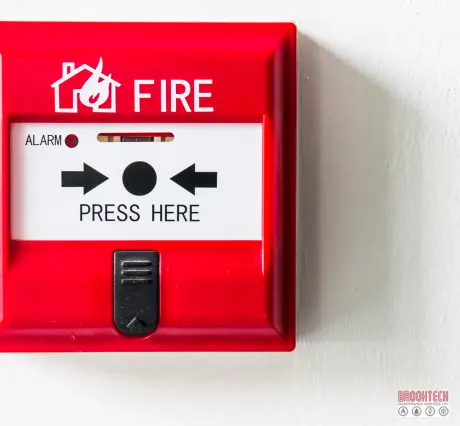Emergency Lighting Maintenance: Why It Matters Even More In Winter
Dark evenings arrive earlier. Power cuts feel more disruptive. Evacuations become harder. This is when your emergency lighting proves its worth. Strong emergency lighting maintenance keeps people safe and your site moving.
At Brooktech, we test, maintain, and repair emergency lighting for commercial clients. We make sure systems work when the mains fails. Here is what good practice looks like and why winter raises the stakes.
What emergency lighting does for your business
Emergency lighting does more than tick a box. It gives people clear direction when things go wrong. It keeps work moving during outages. It reduces panic. It supports safe shutdowns of plant and equipment.
Done well, emergency lighting maintenance protects staff, visitors, and your reputation. It also supports compliance under the Fire Safety Reform Order 2005.
Why winter raises the risk
Winter brings longer nights and harsher weather. Visibility drops inside and outside buildings. Batteries work harder in colder conditions. Moisture and temperature swings can affect fittings and controls.
If you skip emergency lighting maintenance now, faults can stay hidden. You only discover them during a real incident. That is too late. Winter is the time to check everything and fix the weak points.
What a compliant system includes
A complete system covers different needs.
Your setup should include:
- Emergency escape lighting to assist during dangerous situations.
- Escape route lighting to mark exits and guide people to safety.
- Open area lighting to reduce panic and support swift movement.
- High risk task area lighting for safe shutdown of critical plant.
- Standby lighting to allow teams to keep working during a power cut.
Emergency lighting maintenance confirms that each of these parts operates as designed. It also confirms that changeovers happen automatically when the mains fails.
The testing schedule you should follow
Your testing calendar must be clear and consistent.
These tests are vital. They prove batteries can hold for the required time. They show that luminaires are in the right place and pointing the right way. They also flag damaged fittings, worn legends, and obscured signage. Emergency lighting maintenance records must be kept up to date in your logbook.
A proper test is more than a quick switch off. It should:
- Confirm automatic operation on mains failure.
- Check luminance levels and viewing distances.
- Inspect lenses, diffusers, legends, and fixings.
- Prove local key switches and central controls.
- Verify charger indicators and battery condition.
- Confirm the system layout still matches building use.
If areas have changed, we advise on repositioning or adding fittings. Emergency lighting maintenance should always reflect how your people actually move through the site today.
Common faults we find in winter
Shorter days reveal problems fast. We often find:
- Batteries that fail before the required duration.
- Fittings blocked by racking or new partitions.
- Damaged bulkheads in loading bays and yards.
- Water ingress into external luminaires.
- Faded or incorrect exit legends.
- Key switches that do not isolate correctly.
Catching these early through emergency lighting maintenance prevents nasty surprises during a real evacuation.
How emergency lighting links to your wider safety plan
Emergency lighting is part of a bigger picture. It supports fire alarm activation, safe egress, and assembly. It helps people navigate stairs, ramps, and external routes. It also ties into emergency lighting for high risk tasks, so teams can shut down safely.
That is why we recommend pairing emergency lighting maintenance with routine electrical testing, fire alarm service, and checks on emergency exits. Joined-up planning keeps people safe and reduces downtime.
Practical winter actions you can take this week
You can strengthen your position with a few simple steps:
- Walk the escape routes at dusk. Spot dark spots and obscured signs.
- Check that external doors open freely and routes are not slippery.
- Ask teams to report fittings that look dim or damaged.
- Update your emergency lighting logbook and building plans.
- Schedule your six month or annual test if it is due.
These small habits support formal emergency lighting maintenance and raise confidence across your site.
How Brooktech helps with emergency lighting maintenance
We deliver professional testing and maintenance that fits around your operation. Our electricians carry out the required one hour and three hour tests. We check emergency escape lighting, escape route lighting, open area lighting, high risk task area lighting, and standby lighting. We confirm automatic operation on mains failure and support compliance with the Fire Safety Reform Order 2005.
If we find defects, we provide clear advice and fast remedial work. We also offer planned maintenance packages. These bring fixed rates, priority response, and a customer portal for full visibility of tests, certificates, quotes, and invoices.
Winter is not the moment to hope your lights will work. It is the moment to prove they will. With consistent emergency lighting maintenance, you protect your people and your business. You stay compliant. You stay ready.
If you want your system checked, repaired, or brought up to standard, speak to us today. We will build a simple plan that keeps your emergency lighting dependable all year.









